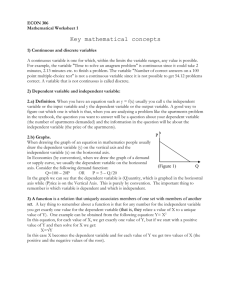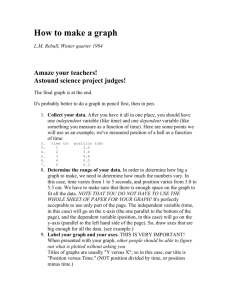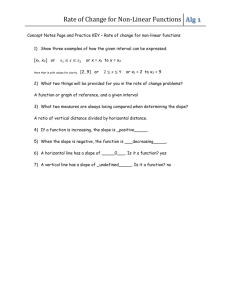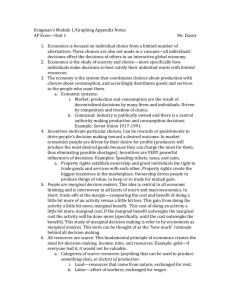CHAPTER 1 - THE ART AND SCIENCE OF ECONOMIC ANALYSIS
advertisement
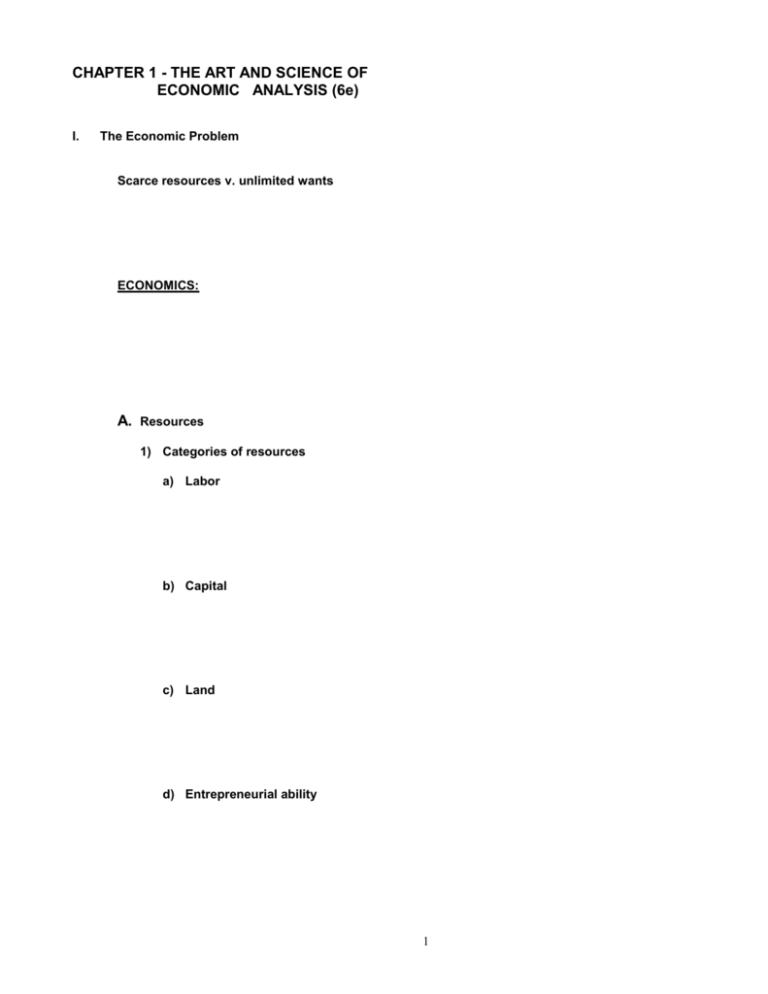
CHAPTER 1 - THE ART AND SCIENCE OF ECONOMIC ANALYSIS (6e) I. The Economic Problem Scarce resources v. unlimited wants ECONOMICS: A. Resources 1) Categories of resources a) Labor b) Capital c) Land d) Entrepreneurial ability 1 2) Payments to resource owners a) Wages for labor b) Interest for capital c) Rent for land d) Profit for entrepreneurship B. Goods and Services Resources are combined to produce: Goods Services C. Economic Decision Makers 1) Households (leading role) 2) Firms 2 3) Governments 4) The rest of the world The economic decision makers interact by means of markets. MARKET: Product market Resource market D. A Simple Circular Flow Model Circular flow model: Study the diagram on p. 5; be sure you understand the flows of resources, products, and money between households and firms. 3 II. The Art of Economic Analysis Study pp. 6-8 carefully on your own. Focus on the meaning of marginal analysis (p. 7). Understand the difference between microeconomics and macroeconomics (pp. 7-8). III. The Science of Economic Analysis Study pp. 8-16 carefully on your own. Understand the concept of an economic theory or model (p. 8). Know the difference between positive and normative economic statements (p. 10). Point of interest: The Case Study on p. 14 and Exhibit 3 on p. 15 show the excellent earning potential for economics majors (male and female) compared to many other majors. If you would like to talk about economics as a possible major for you, please come by my office—I would be happy to discuss this with you! 4 APPENDIX TO CHAPTER 1 - UNDERSTANDING GRAPHS Graph: a picture showing how variables relate Components of a Graph: See Ex. 4 Origin - represents zero value for both variables Horizontal axis - measures values for the variable “x” Vertical axis - measures values for the variable “y” Note: It is often true that one variable depends on (i.e., is determined by) the other. For example, if the value of x depends on the value of y, then x is the dependent variable and y is the independent variable. I. Drawing Graphs Based on the Relations Between Variables A. Positive (Direct) Relation Between Variables See Ex. 6, Ex. 7, and Ex. 8(a) for examples 5 B. Negative (Inverse) Relation Between Variables See Ex. 8(b) for an example C. Variables may the Independent (Unrelated) See Ex. 8(c) and 8(d) for examples II. Slopes of Straight Lines Slope: how much the vertical axis variable’s value changes for a given change in the horizontal axis variable’s value Slope = change in vertical axis value change in horizontal axis value Positive relation positive slope See Ex. 8(a) 6 Negative relation negative slope See Ex. 8(b) III. Slope, Units of Measurement, and Marginal Analysis and IV. Slopes of Curved Lines Read pp. 21-23. Know how to calculate slopes. V. Line Shifts See Ex. 12 END 7

